The teddy bear
The teddy bear
Hi friends, I hope you are well and have a good weekend?
I'm going to talk to you today about an object that everyone knows and loves and that everyone has had or still has in bed or in the attic ...
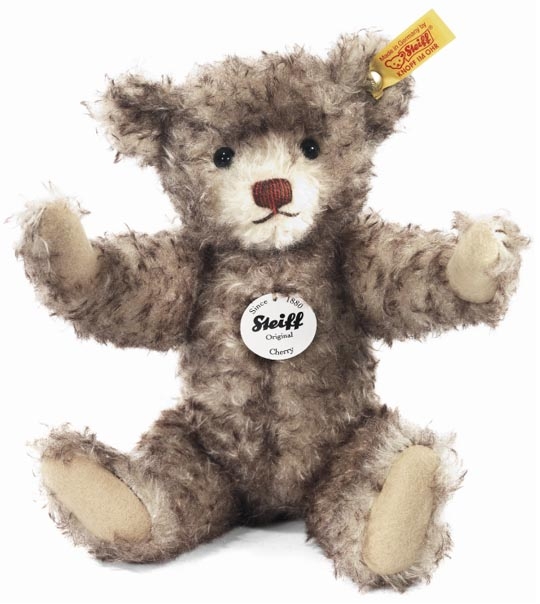
The teddy bear, also called Teddy bear, is a toy in the shape of a bear. This is a traditional form of plush, stuffed with straw, beans, or more recently cotton or plastic.
Towards the end of the 20th century, some teddy bears became real and expensive collectibles. Arctophilia is the art of collecting teddy bears. Some arctophiles favor ancient bears, others bear artists. The first teddy bear museum, the Teddy Bear Museu, was founded in 1984 in Petersfield, Hampshire, England.
History
German origin
Margarete Steiff was a German toy manufacturer who started producing stuffed animals in 1880 with the remains of her Uncle Steiff's factory. In 1902, she was persuaded by her nephew Richard Steiff, an employee in his company, to create a teddy bear, which he said would have similar popularity among boys and girls.
He was returning from the Stuttgart Zoo, where he had made sketches of bears. He then presented the plans for an articulated bear, the Bear PB 55, which she made a mohair plush prototype, which she exhibited at the Toy Spring Fair in Leipzig in 1903.
The Steiff company had a huge success for the time. Orders poured in, including one from America, where a wealthy buyer named Hermann Berg asked for more than 3,000 copies, which greatly contributed to the popularity of Steiff stuffed animals.
His favorite teddy bear was then called "Friend Petzy". In 1907, the production of teddy bears exceeded one million.
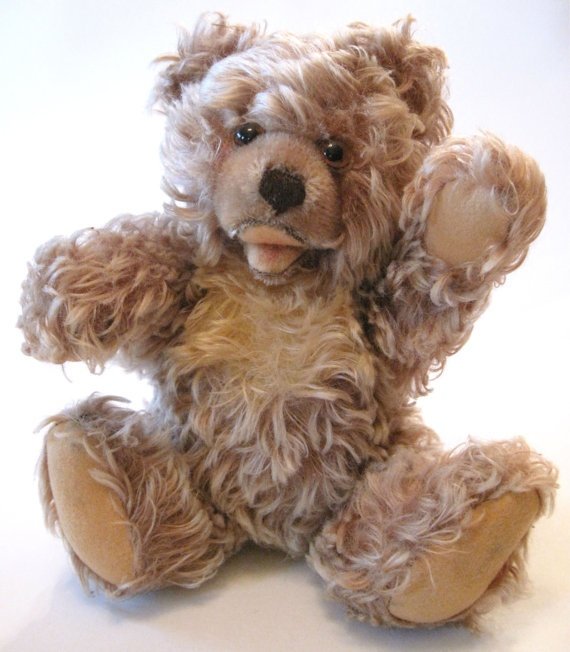
Today, some bears from the first years of the Steiff family survive. They are recognizable by a metal button in the left ear. The company still exists. She created new bear models in the late twentieth century, including "Zotty" the grizzly bear.
American origin
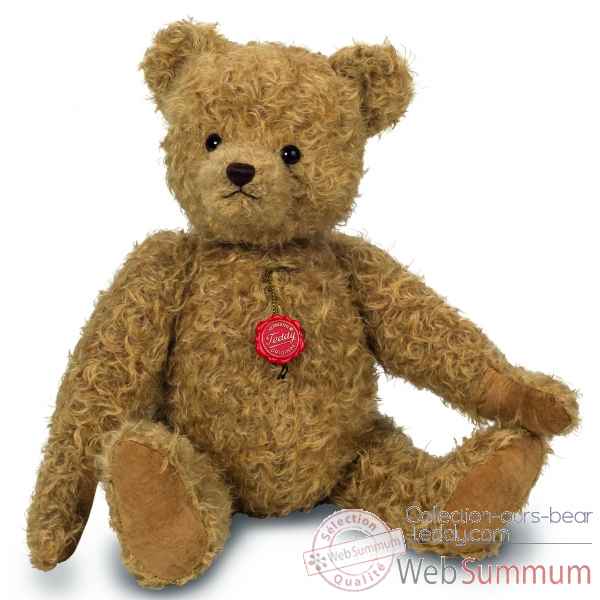
It is in 1903 that the famous name of the teddy bear appears: Teddy Bear.
The name comes from US President Theodore Roosevelt, who was nicknamed Teddy and a great hunting lover. An anecdote tells that an incident occurred during a bear hunt in Mississippi in 1902: hunters drove a teddy bear to satisfy the cartridges of the president, who had been empty-handed for several days.
Roosevelt, outraged, judging the anti-sporting act, refused to kill the animal. This story was soon immortalized: the phrase Teddy's Bear was immediately used in cartoon cartoons, including by Clifford Berryman in the Washington Post.
Two Russian emigrants from Brooklyn, Rose and Morris Michtom created and commercialized from 1903, from the drawings published in the press, a teddy bear that they christened Teddy, with the permission of the president: the name of Teddy bear is found on all the bears of Michtom's production. The Michtom are then known as the first makers of articulated mohair bears.
French origin
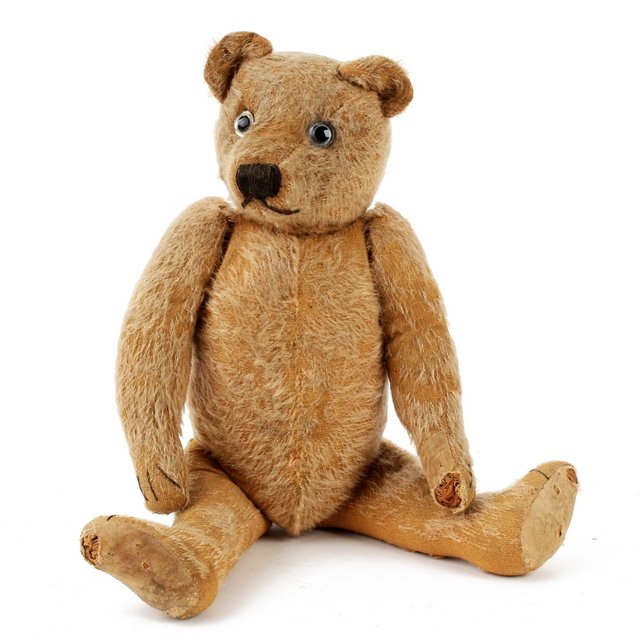
Mr. Pintel, who was then a manufacturer of stuffed or mechanical toys, ended up putting a bear in his collection in 1921. He looks in many ways to the German bear, except for the famous bump in the back that he does not reproduce no and a slight difference in the way of sewing the nose. Pintel bears also smile or grimace: it is the elaboration of the expression.
The more time passed, the more the bears changed; even if traditional bears remained on the market. Today we find all the colors and all forms.
Manufacturing
Steiff bears are made of mohair ranging from beige to brown and stuffed with wood shavings or sawdust. The black eyes are boot buttons, the muzzle is refined, finished with a wool truffle, surmounting an inverted V mouth. The back is vaulted. His arms are long, and can sometimes reach the knees.
The bear can measure from 45 cm to 75 cm. He has large legs, wide thighs, feet set at right angles to the legs. The claws are represented by black wool dots. The members are articulate and mobile. The stomach sometimes contains a growler.
Before the Second World War, eyes in boot buttons were replaced by glass eyes with pupils, fixed to the head by wires.
After the war, the morphology of the teddy bear changes: the hump is more discreet, the limbs are shorter, the feet finer. The rexine replaces felt or velvet. The body is more flexible and it becomes even more important to keep them clean and hygienic.
Nowadays, truffles are made from plastic, seams are stronger, dyes are forbidden. Articulated bears have gradually disappeared, giving way to softer, rounder and more bouncy bears.
The classic bear has three variants over the years: the big bear, up to 1.50 m; the miniature bear, whose prototype was developed by Steiff, with a 22 cm bear. True miniatures do not reach 15 cm. And finally the roller bear, which is a real caricature of real wild bears.
The different bears
The automaton bear
In the 1920s, the first automaton bears were made by the German company Gebrüder Bing, Nuremberg, kitchenware manufacturers. In the 1930s, the company went bankrupt but the mass production of automatic bears continued.
Other elaborations have emerged over the years: Süssenguth bears have a simple function that allows them to move their eyes and their tongue. Or the growling bears.
The bear therapist

It was in the United States that Dakin's first Rock-a-Bye Baby Bears appeared, designed to restore the heartbeat of the fetus and soothe 16-week-old babies.
One of the first to use a teddy bear therapist was Peter Bull, who, after building rudimentary arms to a bear, explained to a little boy his illness and was able to comfort him at the same time. A few years later, his idea was echoed by Russell Mc Lean, better known as Teddy Bear Man, who devoted charity to offering teddy bears to every hospitalized child to comfort him.
The bear and soft fluff
Suzanne Van Gelder created in Paris in 1947 the Anima brand which specialized in the manufacture of soft fluff. His first prototype models, in 1945, a boy and a girl stuffed, blue for one, pink for the other, were named "Poumi" and "Nanou", she had created for her nephews.
She revolutionized the plush by creating patterns to cut the stuffed in shapes that do not require any internal frame and therefore an aesthetic and comfort unmatched. Anima was one of the most famous and most fashionable Parisian brands of the years 1950-1970. The Museum of Decorative Arts in Paris shows bears created by Suzanne Van Gelder for Anima in the 70s.
Famous stuffed animals
• Paddington
• Winnie the Pooh
• Billy Bluegum (Australia)
• Michka (Russia)
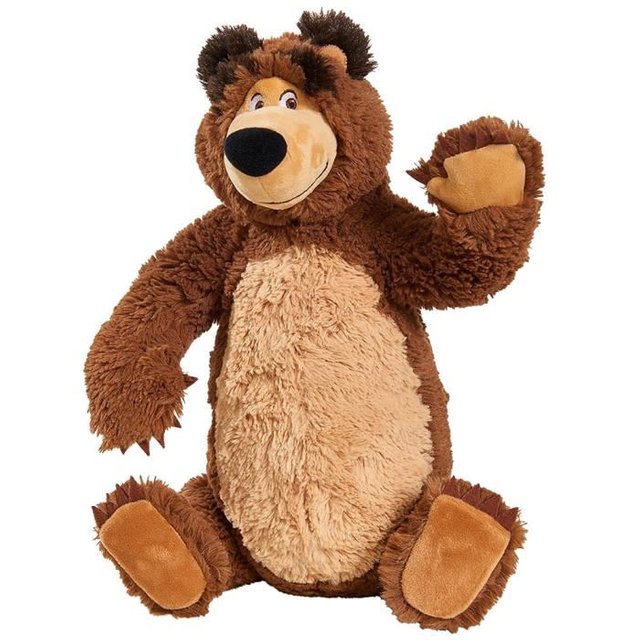
• Rupert (England)
• Prosper (France)
• Big Teddy Bear and Oscar (Good night little ones, France)
• Duffy the Disney Bear
• Lotso (Toy Story 3)
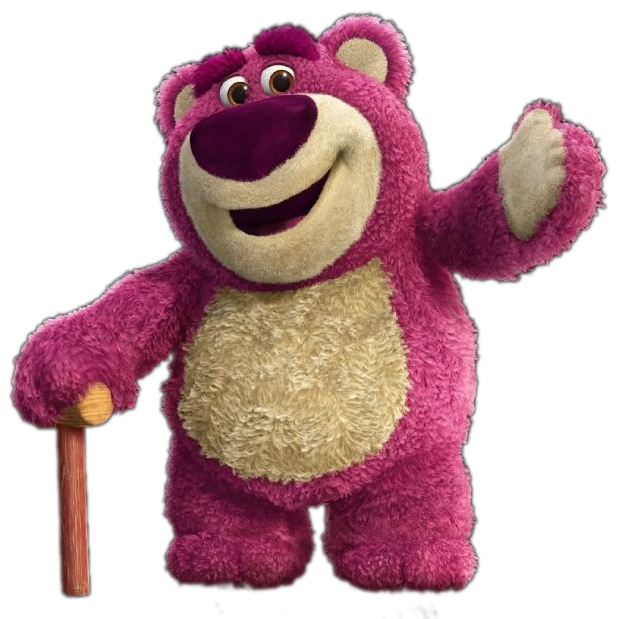
• Ted
The world needs more hugs. That is my reaction to this post, nice write up though! Thanks for sharing :)
Hi @lndesta120282 I'm good. I hope you too
Oh yeah, the teddy bear is the most famous soft toy. It really was for everyone. I still have plush bears in the attic.
At us traditionally young guys give the beloved of the big plush bears.
I also know a story based on real events about a teddy bear that aroused fear for a whole quarter. People were really afraid of a small teddy bear. Experts argued that this is a poltergeist :)
I liked your message, thank you
I like taddy bear
your taddy bear is the best.
To hear the speech version of this post click the play image.

Brought to you by @tts. If you find it useful please consider upvote this reply.
Nice post
very good post,@lndesta120282
Simetimes, I wonder what ladies especially derive from having a teddy bear. My kid sister won't let me be if I don't get her a new teddy every year.
Anyways, nice post and thanks for sharing @lndesta120282 ✌
This a very good post.
However, we have to be aware and explain children that playing with Teddy Bear is OK but if by chance they meet a real bear, they should not try to play with him.
Nice one. We once had a Teddy bear,while I was much younger. It gave my kid sister nightmares,so we had to get rid of it.